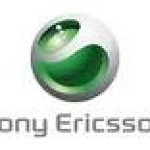- 行业: Mobile communications
- Number of terms: 593
- Number of blossaries: 1
- Company Profile:
Sony Ericsson is a joint venture established on October 1, 2001 by the Japanese consumer electronics company Sony Corporation and the Swedish telecommunications company Ericsson to make mobile phones. The company's global management is based in Hammersmith in London, United Kingdom, and it has ...
Refers to various techniques used to detect and correct errors that may be introduced when digital data is copied, moved or transmitted to another device. Detection and correction technologies generally require that the data be expanded to include additional information, which can noticeably impact the rate at which the effective information is delivered.
Industry:Mobile communications
The European counterpart to ANSI, the American Standards Institute. ETSI's task is to pave the way for telecommunication integration in the European community as part of the single European market plan. www.etsi.org
Industry:Mobile communications
General Packet Radio Service refers to a new, packet-based wireless communication service that promises data rates from 56 up to 114 Kbps and continuous connection to the Internet for wireless phone and mobile computer users. The higher data rates as well as the "always connected" mode of operation will open the door to many new, non-voice applications and services. GPRS was designed to enhance GSM communications, but will probably be adapted and adopted by at least some network operators using technologies other than GSM.
Industry:Mobile communications
The global system for mobile communications service is the most widely adopted, digital cellular technology in use today. GSM uses time and frequency division techniques (TDMA and FDMA) to optimize the call carrying capacity of a wireless network. GSM also provides a number of carefully standardized and broadly supported capabilities such as Short Message Service (SMS), circuit switched data (CSD) and General Packet Radio Services (GPRS). Used on the 900 MHz and 1800 MHz frequencies in Europe, Asia and Australia, and the MHz 1900 frequency in America.
Industry:Mobile communications
The unique digital identifier of a device communicating over the internet or other data network using similar technology. Today's addresses consist of a 32-bit string of 1's and 0's and are analogous to postal addresses.
Industry:Mobile communications
International Telecommunication Union-Terminal Special Study Group IMT-2000. This body is part of the International Telecommunications Union and offers a long-term vision related to the evolution of IMT-2000 systems and other systems over the next ten years.
Industry:Mobile communications
It is a programming language developed by Sun Microsystems which are readily available in most cell phones. Java is used for many games and application that you can download and install on your phone.
Industry:Mobile communications
Stands for "radio frequency" and is a commonly used acronym to refer to a radio link, e.g. "goes over RF to the cell".
Industry:Mobile communications
A subscriber removable printed circuit and chip set card that must be present in GSM phones before they are recognized by a GSM network. The SIM holds information identifying the subscriber to the network. The most recent generation of SIMs are application programmable as well.
Industry:Mobile communications
Transmission Control Protocol (TCP), and Internet Protocol (IP) together define the basic rules for how information is transmitted across the internet (as well as on most LANs) in packet form.
Industry:Mobile communications
